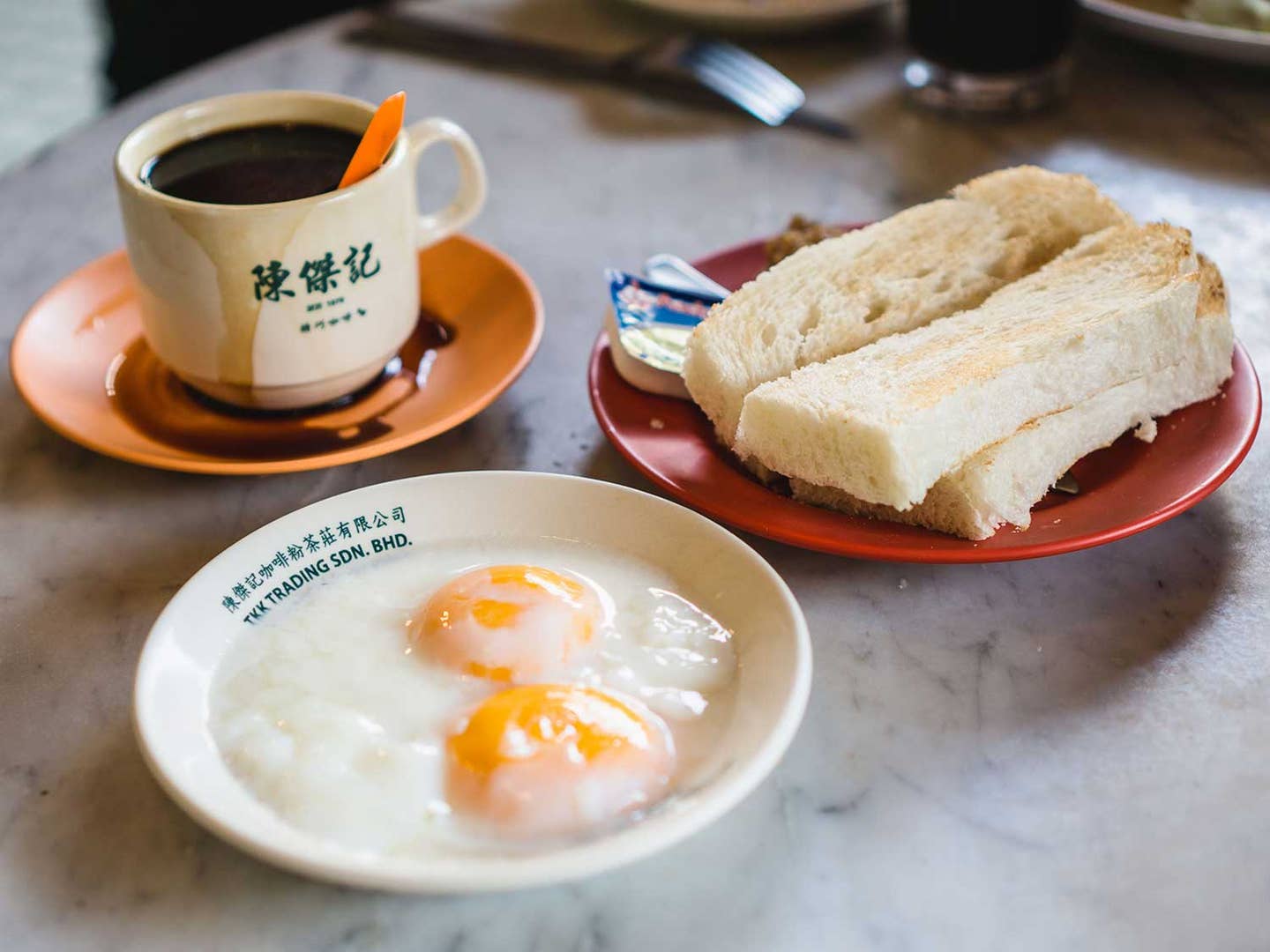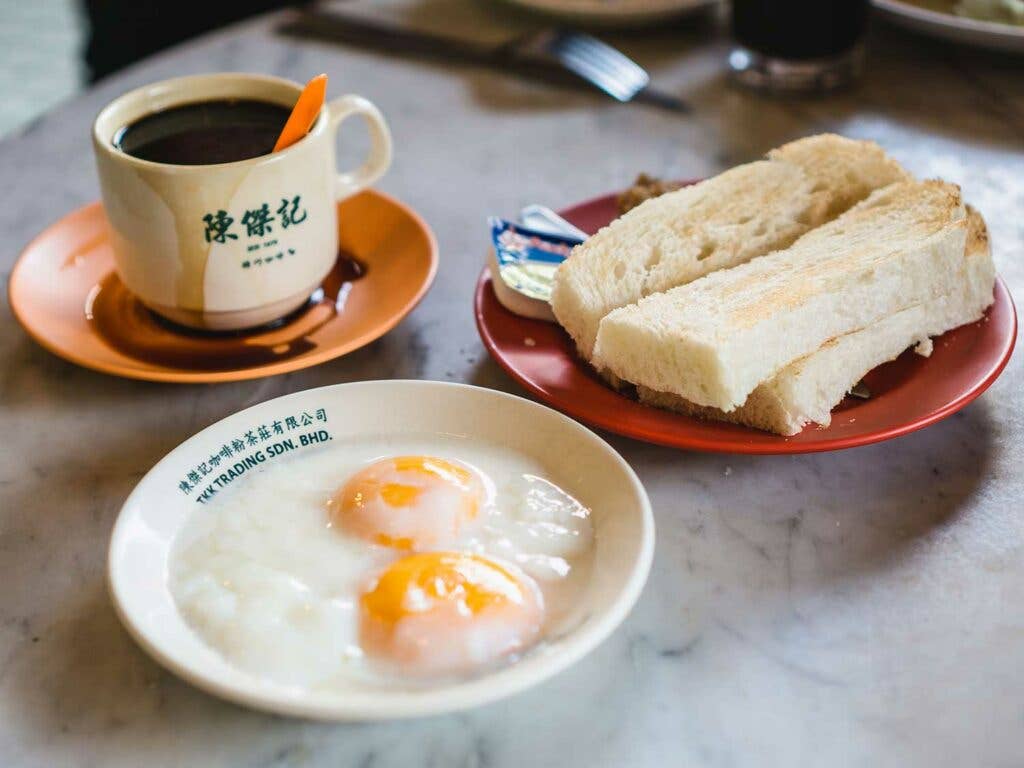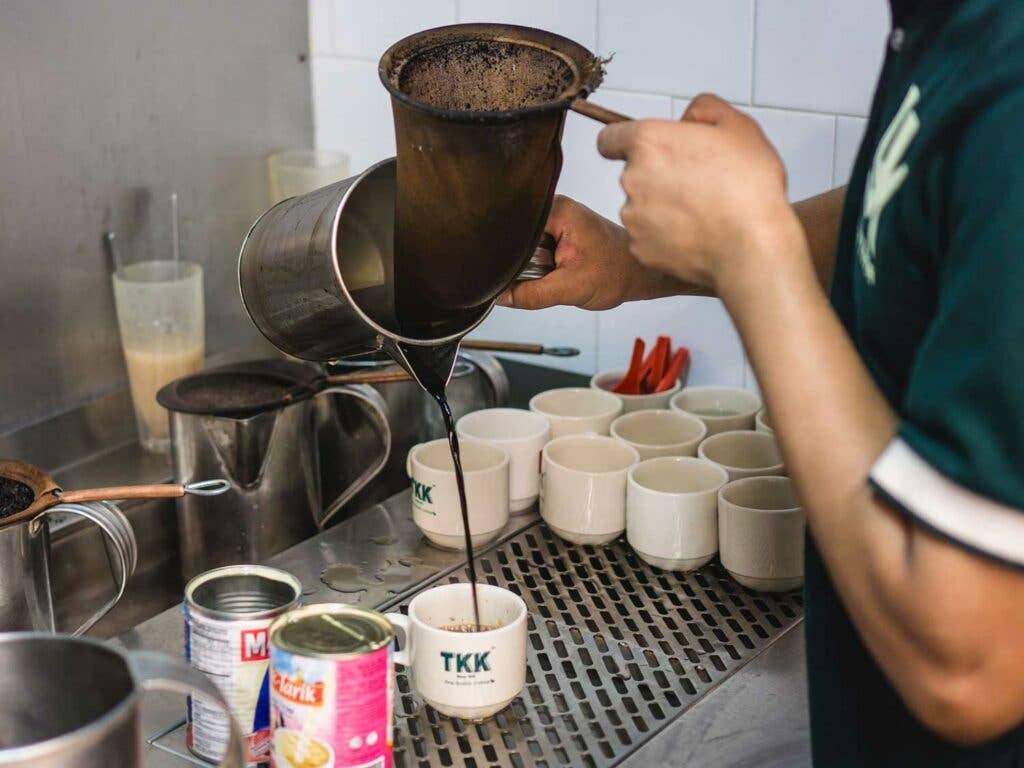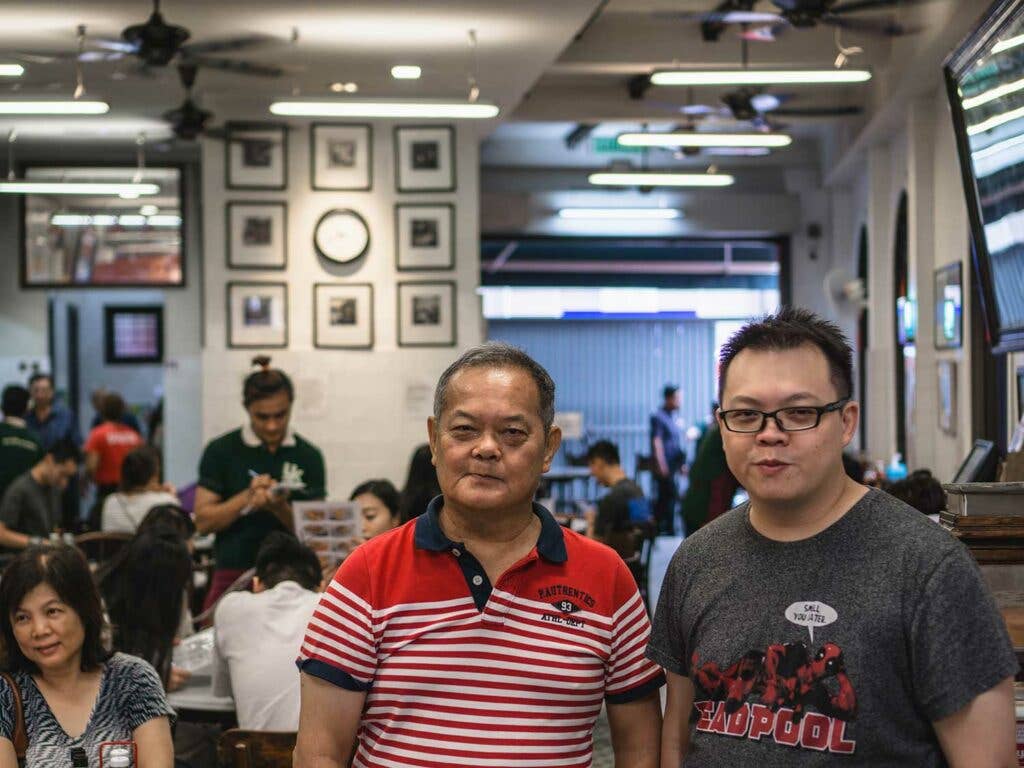
How Chinese-Influenced Coffee Shops Became the Go-To Breakfast Spots of Malaysia
Coffee, eggs, and kaya toast at Yut Kee, one of Kuala Lumpur’s oldest kopitiams
At 8 a.m. in Kuala Lumpur, the rush-hour traffic starts to pile up just as the seats at Yut Kee kopitiam, or coffee shop, begin to fill. Elderly Chinese couples make their way to the marble tables, walking cane in one hand, morning papers in the other. Kids in navy shorts and pinafores wolf down their breakfast before heading off to school. And workers, both blue- and white-collared, sip on their coffee and crunch down on toast, preparing themselves for the day's work. As one of the oldest kopitiams in Malaysia's capital city, Yut Kee has built a history—and a following—older than the nation itself.

Settled in at a table in the corner, I shout my order to my server over the din of morning chatter and the clinking of porcelain pots. Two minutes later, I'm served a cup of coffee—bitter, jet-black, and, as always, purposefully burnt, the way Malaysian kopi is traditionally made. Jack Lee, the owner of Yut Kee, soon follows with a bowl of two pearlescent, half-boiled eggs, seasoned with soy sauce and a few taps of ground white pepper. Then comes the toast, slathered not with fruit preserves or marmalade, but with a luscious dollop of kaya—a thick, rich jam made from coconut cream and eggs—and a few cold chunks of butter.
This trio of toast, eggs, and coffee is the quintessential Malaysian breakfast, one you'll find served more or less the same way at kopitiams all over the country. These all-day diner-style cafés are a sight as common in Malaysia and Singapore as pizza parlors or Jewish delis are in New York City. Only instead of pizza and pastrami, you'll find an array of breakfast dishes, noodles, and rice. And just like those culinary pantheons of America, kopitiams are the proud product of immigrants.

In the 1800s, Malaysia was a burgeoning British colony (then known as Malaya), and to build up the budding economy, the British opened up the borders, allowing unrestricted migration into the country, so much so that from 1881 to 1939, Malaya had the highest immigration rate of any country in the world (10 times that of the U.S. at the time). Many of these immigrants came from India and China, and started life in Malaysia as indentured laborers at tin mines and rubber estates. According to Dr. Eric Olmedo, a food anthropologist and research fellow at Malaysia’s National University (UKM), of all the immigrants, “the Hainanese [from the island province of Hainan, China] were one of the last to arrive in Malaysia, so many of them became household servants, gardeners, and cooks,” jobs that weren’t yet taken up. But despite racial discrimination and oppression within the colony, many young Hainanese cooks eventually went on to open the very first kopitiams, embedding their cuisine into that of Malaysia.

One of these enterprising young cooks was Jack Lee’s father, Lee Tai Yik, who came to Malaysian as a teenager in the late 1800s. In 1928, after two decades spent as a cook for Choo Kia Peng, an influential Chinese-born businessman who got his start in the Malaysian mines, Tai Yik left his employ to start Yut Kee, and ran the restaurant for nearly 30 years before passing on. After his death, Jack, Tai Yik’s only son, took up the mantle, helping his elderly mother run the restaurant, becoming, in his words, “a cook by compulsion, not by choice.”
Today, three generations on, the core spirit of Yut Kee still remains. While some of Tai Yik's pioneer recipes are admittedly less made-from-scratch and more streamlined than before (mainly to cope with the kopitiam's rise in popularity over the decades), Yut Kee still serves some of the most authentic Malaysian-Hainanese cuisine around. The Malaysian breakfast of coffee, half-boiled eggs, and kaya toast, is, as Olmedo describes, "a cultural remnant of the British colonial breakfast," while the roti babi (a toastie-like invention stuffed with minced pork in lieu of cheese) and battered, deep-fried chicken chops drenched in gravy, served with a side of potato wedges and peas, further reflect the British-Hainanese influence at play. And of course, there are the staples like curry noodles and hokkien mee (noodles stir-fried and caramelized with a sweet, soy-based sauce) that you'll find at kopitiams across the country.

Jack may have initially been a reluctant chef, but he has warmed to the business in the six decades since taking over. Prouder still is he to see his son, Mervyn Lee, stepping up to carry the torch in recent years. “Nearly a century ago, my father, an immigrant, set up this place that I’ve been a proud guardian over, and now it’s about time for Mervyn to take over,” he says. “After all, not every institution can say that they’ve existed for almost 100 years.”
Keep Reading
Continue to Next Story










